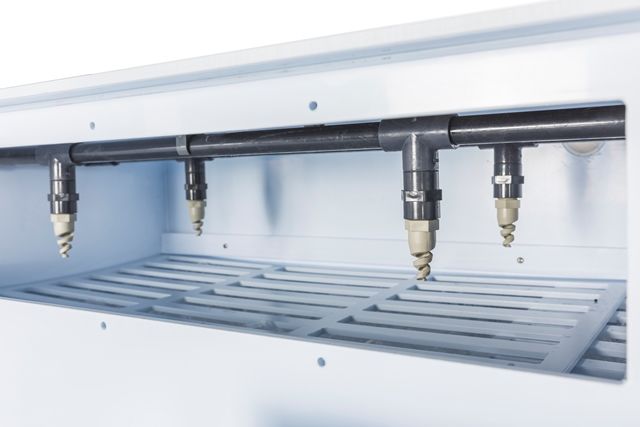
Wet scrubber fume hoods have a vital role to play when it comes to safely discharging exhaust emissions from laboratories, manufacturing facilities, and industrial workshops by removing harmful gases and particles from the stream of discharged air. They help to keep the area of work, its surrounding environment, and its workers safe from any contaminants. You can find more on wet-scrubbers, here.
Hence, they need to be maintained regularly.
It’s possible to divide wet scrubber maintenance into reactive and preventative duties. Preventative duties focus primarily on using fume hoods properly, such as avoiding its use in constant high temperatures depending on the equipment’s construction material.
Most fume hoods are built with polypropylene (or at least they should be), but a wet scrubber with PVC, for instance, needs a cooler temperature of 54 degrees Celsius or under. Meanwhile, a polypropylene wet scrubber can handle temperatures as high as 71 degrees, while Fibreglass Reinforced Plastic can cope with temperatures of 82 degrees.
Further preventative maintenance measures involve keeping the fume hood firmly secured on a solid foundation to give it sufficient support. It must always be kept away from direct sunlight (particularly if the scrubber is made from grey PVC), and must never be moved by the flanges.
Reactive maintenance has a broader spectrum. It can be divided up into weekly and daily duties. When carrying out maintenance work, wearing protective accessories and clothing is necessary.
A vital maintenance procedure that must be carried out daily is checking the wet scrubber’s pH level. It must be maintained as near as possible to 7, with a range of 5.5-8.5 considered to be acceptable. A minimum of one check must be carried out daily, and preferably two. Alkali should be added slowly as necessary to adjust the wet scrubber’s pH level.
If the levels are incorrect, crystals could farm, and that could result in the equipment’s parts becoming blocked. If an automatic dosing system is installed, it has to be checked regularly and the levels of the dosing chemicals maintained.
It’s possible to calibrate the pH probes that are used for measuring and controlling the dosing quantities against the standard buffer solutions in order to ensure they are functioning properly.
Wet scrubber fume hood spray nozzles often become plugged, and therefore they require regular checking. No waste must be poured near the unit, and the filters need to stay clean, with daily washing down of the equipment to get rid of residual build up.
Every week, the sump must be drained, cleaned and refilled with fresh water. During these checks, the pumps have to be checked as well. Water is a vital component in wet scrubbers, acting as the scrubbing agent since it traps particulate matter and gases. It’s necessary to have a constant water supply to replace the contaminated sump water overflow, so levels must be monitored carefully.
Some other maintenance requirements include regularly checking the housing of the fume hood for any damaged or loose parts, regular debris checks, ensuring the safety guards have been secured in place, checking the ducts for fume leakage and corrosion, checking the rate of airflow, checking the exhaust fan and maintain careful operating data records.
Read our Privacy Policy for more information on how we collect and process data.



No thank you
Read our Privacy Policy for more information on how we collect and process data.